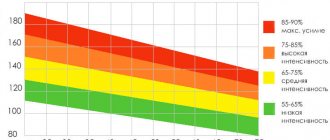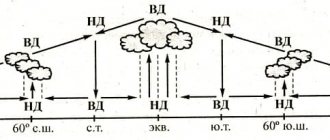The average heart rate when running and monitoring its norm is very serious. Any physical activity affects all systems, internal organs and muscle mass. Therefore, it is necessary to control your own condition and prevent it from worsening. In standard mode, the body functions adequately, but if a person loads himself with cardio training, he must monitor his heart rate. Their meaning provides a lot of information - with weak training there will be no noticeable effect, but with excessive training, disturbances in the functioning of all organs may appear. It is recommended to separate beginners and athletes - for different categories, heart rate and its maximum are different.
Who should monitor their heart rate?
Running is an impact on the body, the strength of which will only increase along with speed. Therefore, when you increase your pace, your body's consumption of important substances and oxygen from the blood increases. To speed up the delivery of these microelements, the heart muscle has to contract faster.
Your optimal life-time and maximum heart rate will change over the years. But age is not all that will really change the rate.
Will affect:
- gender – the normal heart rate when running for men will be slightly higher than for female peers;
- level of physical fitness - a beginner and an experienced runner will have different paces;
- bad habits - if a person smokes or likes to drink, the heart rate will quickly increase;
- stress and emotional distress - this can include any stressful situation, torment and problems that affect desire and strength;
- state of health - even a common runny nose can disrupt the rhythm, and colds and serious illnesses become a reason to weaken training or abandon it;
- weather - strong winds, drizzling rain or snow are worth postponing classes.
Those who are just starting out are advised to listen to themselves and avoid serious excesses of frequency. Normal heart rate during running remains within the normal range or slightly exceeds it. New athletes usually don't want to do this type of training, but it is the safest way to achieve results.
Beginners aren't the only group that needs to count their heartbeats. Even professionals who build a career in sports are counting. They regularly increase their loads, so it is important for them not to overexert themselves. If you do not calculate it, the risk of injury or provoking illness will become much higher.
Controlling the maximum actually permissible heart rate when running allows you not only to lose extra pounds, but also to get to know yourself better.
Is it possible for heart damage due to exercise?
Any physical activity, and especially stress on the heart, should be done wisely. If after training you experience pain in the chest area or a change in rhythm, you should consult your doctor. A specialist will help you figure out the right way to strengthen your heart muscle. Any activity is stressful for an unprepared body, and if you do not know your level of permissible effective load on the heart, you can get serious consequences:
- pain in the heart area;
- arrhythmia;
- cardiac hypertrophy;
- bradycardia;
- hypotension;
- exacerbation of existing diseases;
- myocardial infarction.
Peculiarities
Tension varies; it depends on the force with which the body is forced to move in the process. By increasing speed, the body increases its need to absorb the substances it needs and changes ongoing physiological processes.
The heart is capable of pumping blood at different speeds. When the stress on the artery walls increases during exercise, the heart rate increases.
If you run, your normal heart rate will be higher than if you sit on the couch, which is logical. This is in a completely healthy and trained person. For people who are overweight, have a fever or other problems, it is even higher. But for such categories, an adjusted plan for working on oneself must be created separately.
How does exercise affect the heart?
With any type of training intensity, the muscles begin to work, during which their need for oxygen increases, the heart muscle begins to contract more often in order to fill this need. When the heart works intensively, blood pressure (BP) increases, and the body has to launch the hypotensive system, which is responsible for reducing it.
To obtain energy to carry oxygen, the body first burns carbohydrates. After a 15-20 minute workout, it begins to burn fat. The hormonal system of the adrenal glands and thyroid gland also begins to work, and the composition of the blood improves. Due to the work of the muscles that compress the vessels, pushing out blood, then relax filling the vessels with blood, the load on the heart is reduced. Therefore, even a little physical activity is beneficial for people even with severe heart disease.
Changes with increased heart rate
When jogging, it is 120-130 beats per minute. This is the most suitable atmosphere, it makes it easier to absorb oxygen from the blood. This has little effect on changes in the body - no weight is lost and no mass is gained. But you won’t be able to get exhausted in the process either.
From the useful:
- Heart training. With the help of such activities, you can improve blood supply to the whole body, stabilize the nervous system, and prevent diseases.
- Memory abilities and reaction speed become better.
- Fat burning level. This running heart rate is the level that is perceived as a signal to use fats instead of carbohydrates for energy. The main rule is to run for at least 20 minutes.
- Health improvement. In addition, stress and anxiety levels decrease.
Higher - from 130 to 145 beats per minute. This is what athletes usually do before going to the main part of the training. This is no longer a health jog, but it’s not yet a training run either. It is advisable to maintain a similar rhythm for at least a couple of minutes, then the body will prepare for more drastic exercises.
What heart rate should be while running - the norm for any future champion varies. A steadily training person has 140 at an increased pace of movement and average speed. Heart rate is a rather individual indicator. Where the beginner is out of breath and unable to continue, the experienced runner is not even tired yet. Age should also be taken into account. If at 55 years old the race causes 140, then at 20 years it is usually no more than 120.
A frequency of up to 165 is considered a training frequency, but this is usually used by athletes who develop endurance. Changes occur in the body that fitness enthusiasts use in the short term to lose fat. You can't run like this for a long time.
When training for acceleration, you need to alternate between the fastest movement at values of 175-180 and slow movement. This beating speed can be harmful if you practice on your own. Acceleration to such body capabilities is allowed only under the supervision of an experienced mentor.
What to do if your sneakers rub
Sardana Trofimova: Your feet may chafe because the sneakers are new and not yet worn in. You also need to be careful during long workouts: when you run for a long time, you sweat, and salt comes out. It can lead to chafing.
That's why before every long workout and before a marathon, I smear Vaseline on all my fingers, between my fingers and in places where it might rub. Sometimes even my top rubs. Therefore, I smear any places where chafing may occur with Vaseline - it’s enough for me for the entire distance, I can easily run a marathon.
I would also like to advise amateurs not to wear new sneakers and new socks to the competitions. You definitely need to wear them for at least a week, and run in them at least a couple of times, so that the sneakers become softer. And you also need to run in new socks at least three times and wash them.
How to determine the norm when running
The meaning of this indicator is purely personal for everyone. It can be installed at a level where it is comfortable to walk the distance without deteriorating his well-being. It is also important to take into account physical fitness. To find out how many beats per minute will be normal for a particular athlete, you need to purchase a heart rate monitor.
This is especially convenient if the runner wants to get a certain load or strive to achieve a goal. If you just need to lose excess weight, then running long runs with a running heart rate that does not exceed 130 per minute is suitable.
It is important to purchase not only a heart rate monitor, but also special clothing in which you will be practical and comfortable to move. An unsuitable or low-quality sports suit does not allow air to pass well to the skin, causing excessive sweating. It's stuffy, sweat constantly flows through the body, it doesn't stretch well and presses.
Even for amateur training, it’s worth choosing a set that you like – bright, convenient and comfortable. These include things from Stayer:
- Practical. Non-staining and without unnecessary elements.
- Bright. Stylish and noticeable.
- Comfortable. The main quality of clothing is comfort when moving.
- Price. For high quality and design – low.
Correctly sized sneakers, clothes that make it pleasant to work out in, a heart rate monitor and desire. This is enough to achieve any results.
There are 3 running categories:
| Beats per minute | Duration, min | Note | |
| jogging | 130-150 | 20-40 | Harmless, you can do it yourself |
| Middle distances | 150-170 | 10-20 | It is better to consult a specialist and monitor changes in your condition. |
| Acceleration | 170-190 | 5-10 | Only under the supervision of a trainer |
This is average data. To identify your own indicators, you need to use a formula and control possible changes.
For young people, the maximum allowable formula will be:
220 –x (for the stronger sex);
196 – x (for women), where
X – number of years.
What is the normal heart rate for a 28 year old man when running: 220-28=192 beats per minute. It is not worth allowing an increase even more; this is fraught with the appearance of serious negative changes, especially if it is maintained for a long time.
Heart Rate Training Pyramid
The pyramid of the pulse zone of training implies training in all zones, but taking into account the individual characteristics of the body: the most effective workouts are those that take place 80% in pulse zones 1-2 (the easiest - recovery and fat burning) and 20% in the rest ( cardio, endurance, maximum). But you need to take into account the general fitness of the person:
- if the goal is weight loss, and the initial weight is very large, then the entire workout should take place only in 1 pulse zone (recovery, warm-up);
- you can move on to the next zone only after the body gets used to the previous one, and the whole workout will be too easy, even without increased breathing;
- Even with maximum endurance and many years of sports, going through all the pulse zones is mandatory during one workout - it is strictly forbidden to proceed to the anaerobic pulse zone without preliminary “warming up”.
The time to “pass” each zone should also be determined individually. The first or second can last 2-10 minutes, the third – 40-50 minutes, if the goal is weight loss and figure correction.
Jogging at the usual level
For professionals and simply physically developed people who regularly engage in such exercises, this is normal.
When the rate exceeds the normal level, the runner temporarily returns to a walk, waits for the heart rate to decrease, then accelerates again. Usually he moves at this rhythm for half an hour.
It is important to observe your own breathing. Each inhalation and exhalation is usually deep and unhurried, the duration of each repeats the previous one. This makes it easier to recover and not stop.
If you try to run, despite your heart jumping out of your chest, then instead of a quality workout you will only get harm.
When fat is burned
Any running will provoke energy expenditure. With a normal or reduced heart rate, they are considered most effective. But with such loads, the duration of the race is of great importance. Only after half an hour the body stops using carbohydrates for breakdown and begins to use its own fat deposits. Therefore, an hour-long run becomes as useful as possible.
Beginners and untrained sports enthusiasts should start with a short jog. When the body gets used to it, you can move on to races with short transitions to intense running.
When this rhythm becomes familiar, add small sharp transitions to acceleration in easy mode. Another effective way to get fit is to move on rough terrain. Climbing up and down hills has a great effect on the cardiovascular system. If you follow these tips, you will lose much more fat from your waist.
What is long-distance running and how to prepare for it
Vasily Permitin: According to official terminology in athletics, long distances are 5,000 and 10,000 meters and a half marathon. But usually this includes the marathon. Interesting fact: when we talk about running at a stadium, we talk about the distance in meters – running 5,000 and 10,000 meters. If we talk about the highway – 5 km, 10 km. Some people don't know this and get confused.
The main feature of long distances is that they are run in an aerobic mode. Therefore, during preparation, a large volume of slow running is necessary to build an aerobic base. This is the basis without which it is impossible to overcome the distance normally. Well, that is, you can run, but to run fast or improve your personal best, you need to run at a calm, slow pace. The volume should increase smoothly.
Then we add intensive developmental training, which should be built in in doses and combined with slow volume running. And you can also add strength training to prevent injury in the first place. Nowadays, cyclic sports, especially running, are very popular, and people who get off the couch immediately begin to fanatically run a lot, run fast, and this leads to injuries due to an incorrect balance in training and the lack of a sports base.
Optimal heart rate when running
The normal heart rate at which you should engage in this sport is 115-130 beats per minute. It stimulates blood circulation, accustoms you to exercise, breaks down and removes lactic acid, restores physical and psychological health, removes fat and gives the body an athletic shape.
The main thing is not to allow an increase to 220 or higher. This value becomes critical - blood pressure rises, all systems begin to work in emergency mode, and this is dangerous.
For women
Girls quite often use this sport to keep themselves in good physical shape. In addition, it stabilizes the psychological state and improves mood.
The norm is from 118 to 137 beats per minute. If you measure your pulse before, during and after exercise, you can determine the level of harmless stress for the body.
Beginners often encounter:
- shortness of breath;
- tingling in the side;
- lack of breathing;
- increase in pressure.
If the normal heart rate does not exceed 80, and immediately after the race – 140, then the run is considered too intense or long. Next time you should reconsider and reduce the speed or duration.
For men
Frequent exercise will make him more resilient and active. You can choose the type - long and leisurely or medium distance, but in accelerated mode. It is important that the activities are enjoyable. Trying to run against your will will quickly end and will not bring the desired effect.
The norm for men is from 115 to 135 beats per minute.
If you exercise regularly, the functioning of the cardiovascular and excretory systems will be normalized, sleep and appetite will improve. A brain saturated with oxygen will work more actively, endorphins are produced - hormones of happiness.
How to calculate your heart rate correctly
It is best to consult a specialist and undergo an examination before starting cardio training. This will help identify possible diseases and disorders in the functioning of the heart muscle. But usually the desire to start putting the body in order comes spontaneously, and no one goes to the clinic.
In this case, it is better not to overload yourself and increase the load gradually. There are safe areas to practice based on age, gender, and a variety of other factors. The average among non-professionals is from 60 to 100 beats per minute. For athletes, these are different data - from 37 to 60.
To calculate it, you can use two methods:
- count by yourself by placing your hand on your wrist;
- use a heart rate monitor.
How to dress for different weather
Sardana Trofimova: We have a cold winter in Yakutsk, so at home I train down to -30°C. When it’s very cold, I leave for training camp. I dress so that when I go outside I don’t feel hot. It should be a little chilly. If you dress warmly, you will sweat a lot, and at the end of the distance you may get winded.
We also run at -50°C, but there we need completely different equipment. This is extreme for most amateurs, but it also has its advantages, because in addition to training functionally, you also train your muscles: you have a lot of clothes, they interfere with movement. When you run in the snow, you feel slippery, and you also improve your physics.
Limit standards
You need to monitor your condition. As soon as you no longer have enough oxygen or chest pain appears, you should slow down or stop. You can't continue through pain. It is also not recommended to exceed the maximum allowable heart rate.
For a young man of 19 years old, the maximum will be 201 beats per minute. This is a limit that cannot be crossed without harm to oneself. But this is not just a limitation that is important to consider. This is a load that an unprepared person cannot withstand. It will be different for each age.
Acceptable limits:
| Age, years | Quantity per minute |
| 18 | 202 |
| 19 | 201 |
| 20 | 200 |
| 21 | 199 |
| 22 | 198 |
| 23 | 197 |
| 24 | 196 |
| 25 | 195 |
| 26 | 194 |
| 27 | 193 |
| 28 | 192 |
| 29 | 191 |
| 30 | 190 |
The ideal is to give 70% of the limit. The result will be an intense, but not critical load. Perfectly helps in the fight against excess weight.
Pulse rate:
Let's take the average data:
| Years | Heart rate |
| 20-29 | 140 |
| 30-34 | 135-137 |
| 35-40 | 130-135 |
| 41-45 | 126-130 |
| 46-50 | 120-126 |
This heart rate during exercise will optimally influence weight loss and improve physical fitness without harm to the body.
5 heart rate zones:
It is also worth noting the percentage relationship between the type of training and the desired effect.
| Zone | Load, from maximum | Heaviness | Note |
| Restorative | 50-75% | Very easy | Restores the body, improves health and fitness |
| Aerobic | 70-85% | Just | Improves endurance, begins to burn fat deposits |
| Threshold | 85-90% | Moderately | Improving the body, abilities, increasing heart volume |
| Anaerobic | 90-95% | Hard | Increases strength and muscle mass |
| Maximum heart rate | 95-100% | Maximum opportunity, danger | Limit of development, level of competition and reaching the maximum |
It is important to exercise regularly, regardless of the chosen mode. Then the result will be noticeable.
Pulse zones and training: why they are important to know
Pulse zones need to be known to all people who want to carry out regular training and protect their own body from overload: if you do not comply with the ranges, then it is possible to develop atrioventricular block of a physiological nature of the 2nd degree - this is how the heart reacts to overload, the pulse rate will begin to decrease noticeably, and this is dangerous for the entire circulatory system.
In addition, understanding the essence of pulse zones makes it possible to use physical activity with maximum efficiency - for example, those losing weight can create their own workout schedule, taking into account the fact that the heart rate should be increased by 60-70% at least.
As soon as this threshold is passed, namely, the expressed ease of performing the workout is felt, you can move on to the next heart rate zone. In this rhythm, fats will be burned more intensively, and the formation of the muscle frame will begin, which automatically helps to tighten the skin.
Indicators before, during and after
The norm at rest for people who have not previously engaged in sports, the optimal frequency varies from 60 to 100. It should be measured separately from any activity - sitting on the couch, watching TV or other activity that does not require activity.
It is important to remember that if one morning your heart rate is higher than usual, then you need to stop training for a day.
During movement, the rhythm of contractions depends on the intensity and duration of the race, physical data and other factors that we have already discussed above. There is no need to exceed the limits, especially without the supervision of a trainer.
After running, your pulse should return to normal gradually, but quite quickly. Even after a light jog, you should not stop; you should walk quickly and then at a slow pace.
Blood pressure and sports
Normally, a person’s blood pressure should be approximately 120/80. But people who lead a healthy lifestyle may have lower blood pressure - for example, within the normal range, blood pressure is 100/60.
Sports are not contraindicated for people with hypertension - but they need to carefully monitor the level of stress and start exercising in a gentle manner. You can start with walking - first accustom yourself to walking more, then increase the pace. Later you can switch to running or swimming.
It is better to start training after consulting with your doctor.
IMPORTANT! If your blood pressure exceeds 190\110 at least periodically, if during physical activity you experience a burning sensation or pressure in the chest, intensive training, unfortunately, is contraindicated for you. But you can do static exercises, such as yoga.
What influences
This value varies among all people depending on many reasons. This is influenced by age - the older you get, the slower and harder the cardiovascular system works, and the permissible muscle volume decreases. Weight is also important - the larger it is, the more serious the load on the body during the simplest physical exercises.
In addition, they influence:
- Weather. Especially for weather sensitive people. Strong wind or changes in atmospheric pressure outside can cause deterioration in health.
- Seasons. In winter and summer, there are different indicators of humidity, precipitation, and the comfort of jogging will also be different.
- Diseases. The presence of any chronic illness is a reason to consult a specialist before the first race. Colds should also cancel several workouts or make them as light as possible.
- Clothes and shoes. What a runner is wearing and wearing often determines his performance. In the right suit you will be comfortable and not stuffy, it will not put pressure or interfere with movement. Its task is to “breathe” and prevent excessive sweating. The Stayer brand is perfect for these purposes.
Running technique
Vasily Permitin: Running technique develops for a combination of reasons and does not change. Anthropometry, muscle development, structural features, and psychology greatly influence the movement pattern. You can slightly adjust your running technique and work on it through general physical training, strength and jumping training, and special running exercises.
At adidas Runners we have a separate service - running technique analysis. You can analyze the technique and identify some gross mistakes that a person is making right now: for example, he is running on his toes. Running from the toe overloads the Achilles tendon and periosteum. Or a person runs from his heel and bumps into it - this is a huge load on the musculoskeletal system, which can lead to injury.
The technique can be adjusted, but not changed, the movement pattern will still remain as it is. In general, running technique optimizes and becomes more effective as your form and training volume grow.
You need to run naturally, breathe through your mouth and nose. And then some run and suffocate: they say you have to breathe through your nose.
How to control
There are two ways to control and compare what your heart rate should be after or during running. First the calculations are carried out:
- the average value at rest is revealed;
- The maximum heart rate is determined.
Then it is measured while moving. This can be done manually by simply placing your hand on the carotid artery. Another way is to wear a heart rate monitor or fitness bracelet. With its help, you can determine not only the speed of the heartbeat. It will show the distance traveled, the number of steps, and some of them will measure blood pressure along the way.











